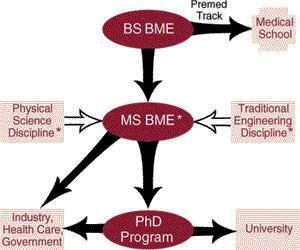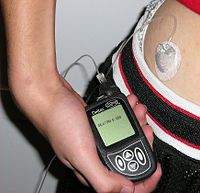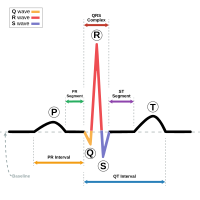
BIO INSTRUMENTATION
Bio Instrumentation is the application of electronics and measurement principles to develop devices and tools used in the diagnosis and treatment of disease. The use of computers is increasing in bio instrumentation now a day from the microprocessor which is used to a wide variety of small tasks in a single purpose instrument to the extensive computing power needed to process huge amount of information in a medical system.
BIO MECHANICS
Bio mechanics deals with the application of mechanics to medical field to solve biological and medical problems. It comprises the study of motion, material deformation, transport of chemical substances across biological membranes, and flow inside the body. Research in bio mechanics helped in the development of artificial heart valves, artificial kidney, artificial hip, etc. It also helps in the study of organs and the skeletal system.
BIO MATERIALS
Bio materials deal with the materials and the living tissues that are implanted in the body. In the design of the implanted materials, understanding the properties of the living material is a vital aspect. One of the most challenging tasks faced by a bio medical engineer is the selection of an appropriate material that is to be placed in the human body. The bio materials that are to be implanted should be non-toxic, non-carcinogenous, chemically inert, stable, and mechanically strong enough to withstand the strong forces in the body.
CLINICAL ENGINEERING
Clinical engineering is the application of technology for health care in hospitals. The clinical engineer forms a part of the health care team along with physicians, nurses and other hospital staff. Clinical engineers develop and maintain the computer data bases of medical instrumentation, equipment records and purchase as well as use the sophisticated medical instruments. They may also work on projects to adapt instrumentation to the specific needs of the physician and the hospital. This involves the interface of instruments with computers and customized software for data analysis and instrument control. In short, clinical engineers apply the latest technology to health care.
REHABILITATION ENGINEERING
Rehabilitation engineering is one of the new and upcoming fields in bio medical engineering. The main function of the rehabilitation engineers is to enhance the quality of life and capabilities of the individuals with physical and congenital impairments. They are concerned with developing assistive technology that improves the mobility, seating, communication of the patient. They also develop hardware and software computer adaptations to help the people with congenital impairments.
MEDICAL IMAGING
Medical imaging is one of the unique techniques that involve the merging of physical phenomenon such as light, sound, magnetism, etc with high speed electronic data processing, analysis and display to create an image. These images can completely be obtained using non-invasive techniques rather than using invasive techniques as they are less painful and can be repeated any number of times.
TISSUE & GENETIC ENGINEERING
Cellular, Tissue and Genetic Engineering involve more recent attempts to solve biomedical problems at the microscopic level. In order to understand disease processes and to be able to intervene at very specific sites, these areas utilize anatomy, biochemistry and mechanics of cellular and sub-cellular structures. With these capabilities, miniature devices deliver compounds that can stimulate or inhibit cellular processes at precise target locations to promote healing or inhibit disease formation and progression.
SYSTEMS PHYSIOLOGY
Systems Physiology is the term used to describe that aspect of biomedical engineering in which engineering strategies, techniques and tools are used to gain a comprehensive and integrated understanding of the function of living organisms ranging from bacteria to humans. Computer modeling is used in the analysis of experimental data and in formulating mathematical descriptions of physiological events. In research, predictor models are used in designing new experiments to refine our knowledge. Living systems have highly regulated feedback control systems that can be examined with state-of-the-art techniques. Examples are the biochemistry of metabolism and the control of limb movements.
BIO INFORMATICS
Bio informatics is one of the bio medical engineering which involves the development and usage of computer tools to collect and analyze data related to biology and medicine. The research work in bio informatics comprises the usage of sophisticated techniques to manage and generate data bases of gene sequences.
BIO MEMS
MEMS (Micro Electro Mechanical Systems) are nothing but the integration of sensors, mechanical elements, actuators, and other electronics on a single silicon chip. Bio MEMS are the application and development of MEMS in biology and medicine. Some of the examples of research in bio MEMS include the development of micro robots that perform surgery in the body, and the development of tiny devices that could be implanted inside the body to deliver drugs to the desired body parts.
BIO SIGNAL PROCESSING
Bio signal processing involves the processing of bio signals in order to extract the useful information for diagnostic and therapeutic purposes. It involves the study of cardiac signals to determine whether a patient can be susceptible to sudden cardiac death, development of speech recognition systems which nullify the background noise, detection of brain signals that can be used to run a computer.
BIO TECHNOLOGY
Bio technology is a combination of various powerful tools that involve living organisms to make or modify products, develop micro organisms for specific purposes. The ancient techniques in bio technology involved traditional animal and plant breeding techniques, the use of yeast in bread, cheese, wine and beer. Recent research in bio technology comprises of the industrial applications of recombinant DNA, bio processing methods, fusion of the cells. All of these are used to nullify the genetic defects in humans. It also involves the degradation of harmful contaminants with the help of living organisms.
BIO SENSORS
Bio sensors involve the development of hardware and software used to detect or measure the biological signals. This comprises the design of different sensors that capture different biological signals. The obtained signal is then amplified and filtered. Now a days there is a lot of research going on bio sensors.
MICRO & NANO TECHNOLOGY
Micro technology comprises the design and development of devices on the scale of a micrometer, and nano technology involves the development of devices on the scale of a nano meter. These specializations involve the development of tiny sensors that have the capability to identify the changes in the properties of the tissue, hence helping the surgeon to identify and remove the unhealthy tissue. Nanometer cantilevers have the tendency to bend along with the cardiac protein levels which helps the physicians in the early and rapid diagnosis of heart attacks.
NEURAL SYSTEMS & ENGINEERING
This is one of the emerging interdisciplinary fields in bio medical engineering. It involves the study of brain and nervous system; it also involves the replacement or restoration of lost sensory and motor abilities, the development of neuro robots, the study of complexities of neural systems in nature and neuro electronics.
PROTEOMICS
A proteome is a set of all proteins produced by a species. Proteomics is the study of proteomes. It comprises the study of the location, structure, interactions, and function of the proteins. An advanced research in proteomics discovered how infections occur in humans, which helps in the treatment of infectious diseases. Moreover, the advances in proteomics have led to the discovery of a method to detect protein patterns in the blood for the early diagnosis of ovarian cancer. Research in proteomics can also pave way for the development of hardware devices that provide accurate and rapid measurements of protein levels.
 Biomedical engineering is a highly interdisciplinary field, influenced by (and overlapping with) various other engineering and medical fields. This often happens with newer disciplines, as they gradually emerge in their own right after evolving from special applications of extant disciplines. Due to this diversity, it is typical for a biomedical engineer to focus on a particular subfield or group of related subfields. There are many different taxonomic breakdowns within BME, as well as varying views about how best to organize them and manage any internal overlap; the main U.S. organization devoted to BME divides the major specialty areas as follows:
Biomedical engineering is a highly interdisciplinary field, influenced by (and overlapping with) various other engineering and medical fields. This often happens with newer disciplines, as they gradually emerge in their own right after evolving from special applications of extant disciplines. Due to this diversity, it is typical for a biomedical engineer to focus on a particular subfield or group of related subfields. There are many different taxonomic breakdowns within BME, as well as varying views about how best to organize them and manage any internal overlap; the main U.S. organization devoted to BME divides the major specialty areas as follows:
- Biomechatronics
- Bioinstrumentation
- Biomaterials
- Biomechanics
- Bionics
- Cellular, Tissue, and Genetic Engineering
- Clinical Engineering
- Medical Imaging
- Orthopaedic Bioengineering
- Rehabilitation engineering
- Systems Physiology
- Bionanotechnology
- Neural Engineering
Sometimes, disciplines within BME are classified by their association(s) with other, more established engineering fields, which can include:
- Chemical engineering – often associated with biochemical, cellular, molecular and tissue engineering, biomaterials, and biotransport.
- Electrical engineering – often associated with bioelectrical and neural engineering, bioinstrumentation, biomedical imaging, and medical devices. This also tends to encompass Optics and Optical engineering medical devices. – biomedical optics, imaging and related
- Mechanical engineering – often associated with biomechanics, biotransport, medical devices, and modeling of biological systems, like soft tissue mechanics.
Biotechnology and pharmaceuticals
Biotechnology can be a somewhat ambiguous term, sometimes loosely used interchangeably with BME in general; however, it more typically denotes specific products which use “biological systems, living organisms, or derivatives thereof.” some complex “medical devices” can reasonably be deemed “biotechnology” depending on the degree to which such elements are central to their principle of operation. Biologics/Biopharmaceuticals (e.g., vaccines, stored blood product), genetic engineering, and various agricultural applications are some major classes of biotechnology.
Pharmaceuticals are related to biotechnology in two indirect ways: 1) certain major types (e.g. biologics) fall under both categories, and 2) together they essentially comprise the “non-medical-device” set of BME applications. (The “Device – Bio/Chemical” spectrum is an imperfect dichotomy, but one regulators often use, at least as a starting point.)
Tissue engineering
Tissue engineering is a major segment of Biotechnology.
One of the goals of tissue engineering is to create artificial organs (via biological material) for patients that need organ transplants. Biomedical engineers are currently researching methods of creating such organs. Researchers have grown solid jawbones and tracheas from human stem cells towards this end. Several artificial urinary bladders actually have been grown in laboratories and transplanted successfully into human patients. Bioartificial organs, which use both synthetic and biological components, are also a focus area in research, such as with hepatic assist devices that use liver cells within an artificial bioreactor construct.
Genetic Engineering
Genetic engineering, recombinant DNA technology, genetic modification/manipulation (GM) and gene splicing are terms that apply to the direct manipulation of an organism’s genes.[1] Genetic engineering is different from traditional breeding, where the organism’s genes are manipulated indirectly. Genetic engineering uses the techniques of molecular cloning and transformation to alter the structure and characteristics of genes directly. Genetic engineering techniques have found success in numerous applications. Some examples are in improving crop technology (not a medical application per se), the manufacture of synthetic human insulin through the use of modified bacteria, the manufacture of erythropoietin in hamster ovary cells, and the production of new types of experimental mice such as the oncomouse (cancer mouse) for research.
Neural Engineering
Neural engineering (also known as Neuroengineering) is a discipline that uses engineering techniques to understand, repair, replace, or enhance neural systems. Neural engineers are uniquely qualified to solve design problems at the interface of living neural tissue and non-living constructs.
Pharmaceutical engineering
Pharmaceutical Engineering is sometimes regarded as a branch of biomedical engineering, and sometimes a branch of chemical engineering; in practice, it is very much a hybrid sub-discipline (as many BME fields are). Aside from those pharmaceutical products directly incorporating biological agents or materials, even developing chemical drugs is considered to require substantial BME knowledge due to the physiological interactions inherent to such products’ usage.
Medical devices
This is an extremely broad category — essentially covering all health care products that donot achieve their intended results through predominantly chemical (e.g., pharmaceuticals) or biological (e.g., vaccines) means, and do not involve metabolism.
A medical device is intended for use in:
- the diagnosis of disease or other conditions, or
- in the cure, mitigation, treatment, or prevention of disease,
Some examples include pacemakers, infusion pumps, the heart-lung machine, dialysis machines, artificial organs, implants, artificial limbs, corrective lenses, cochlear implants, ocular prosthetics, facial prosthetics, somato prosthetics, and dental implants.
Stereolithography is a practical example of medical modeling being used to create physical objects. Beyond modeling organs and the human body, emerging engineering techniques are also currently used in the research and development of new devices for innovative therapies, treatments, patient monitoring, and early diagnosis of complex diseases.
Medical devices are regulated and classified (in the US) as follows (see also Regulation):
- Class I devices present minimal potential for harm to the user and are often simpler in design than Class II or Class III devices. Devices in this category include tongue depressors, bedpans, elastic bandages, examination gloves, and hand-held surgical instruments and other similar types of common equipment.
- Class II devices are subject to special controls in addition to the general controls of Class I devices. Special controls may include special labeling requirements, mandatory performance standards, and postmarket surveillance. Devices in this class are typically non-invasive and include x-ray machines, PACS, powered wheelchairs, infusion pumps, and surgical drapes.
- Class III devices generally require premarket approval (PMA) or premarket notification (510k), a scientific review to ensure the device’s safety and effectiveness, in addition to the general controls of Class I. Examples include replacement heart valves, hip and knee joint implants, silicone gel-filled breast implants, implanted cerebellar stimulators, implantable pacemaker pulse generators and endosseous (intra-bone) implants.
Medical imaging
Medical/biomedical imaging is a major segment of medical devices. This area deals with enabling clinicians to directly or indirectly “view” things not visible in plain sight (such as due to their size, and/or location). This can involve utilizing ultrasound, magnetism, UV, other radiology, and other means.
Imaging technologies are often essential to medical diagnosis, and are typically the most complex equipment found in a hospital including:
- Fluoroscopy
- Magnetic resonance imaging (MRI)
- Nuclear medicine
- Positron emission tomography (PET) PET scans PET-CT scans
- Projection radiography such as X-rays and CT scans
- Tomography
- Ultrasound
- Optical microscopy
- Electron microscopy
Implants
An implant is a kind of medical device made to replace and act as a missing biological structure (as compared with a transplant, which indicates transplanted biomedical tissue). The surface of implants that contact the body might be made of a biomedical material such as titanium, silicone or apatite depending on what is the most functional. In some cases implants contain electronics e.g. artificial pacemaker and cochlear implants. Some implants are bioactive, such as subcutaneous drug delivery devices in the form of implantable pills or drug-eluting stents.
Clinical engineering
Clinical engineering is the branch of biomedical engineering dealing with the actual implementation of medical equipment and technologies in hospitals or other clinical settings. Major roles of clinical engineers include training and supervising biomedical equipment technicians (BMETs), selecting technological products/services and logistically managing their implementation, working with governmental regulators on inspections/audits, and serving as technological consultants for other hospital staff (e.g. physicians, administrators, I.T., etc.). Clinical engineers also advise and collaborate with medical device producers regarding prospective design improvements based on clinical experiences, as well as monitor the progression of the state-of-the-art so as to redirect procurement patterns accordingly.
Their inherent focus on practical implementation of technology has tended to keep them oriented more towards incremental-level redesigns and reconfigurations, as opposed to revolutionary research & development or ideas that would be many years from clinical adoption; however, there is a growing effort to expand this time-horizon over which clinical engineers can influence the trajectory of biomedical innovation. In their various roles, they form a “bridge” between the primary designers and the end-users, by combining the perspectives of being both
1) close to the point-of-use, while
2) trained in product and process engineering. Clinical Engineering departments will sometimes hire not just biomedical engineers, but also industrial/systems engineers to help address operations research/optimization, human factors, cost analysis, etc. Also see safety engineering for a discussion of the procedures used to design safe systems.
A point of reference for clinical engineers would be the catalogue published by The American Society for Hospital Engineering in the Hospital Engineering Reference Series called Maintenance Management for Medical Equipment







